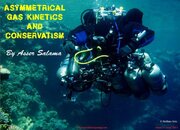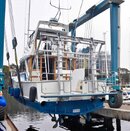One of the most important system design lessons I learned from the bloated Navy saturation diving systems I trained on is that backup systems can conspire to make you less safe. Nobody trained more than we did but there comes a point where quickly and accurately diagnosing a problem is dangerously compromised. Granted there were hundreds of valves, gauges, regulators, and sensors but the principal is valid for the Scuba diver as well.
Any serious study of accidents, diving or otherwise, reveals that most have multiple failures (system and/or human). Three failures are very common. Added hardware provides options to work around failures but increases the chance for human error. Nothing is free.
It is all about failure mode analysis and probability. In this case, the isolation manifold provides backup options, introduces failure potential, and operator complexity. However the same can be said for adding a BCD to a Scuba rig. I think it is fair to say that regulator leaks and freeflow have a higher probability than static HP O-ring and burst disk (in the North America) failures. Add a second regulator and the probability increases, thus the ability to isolate regulators with post valves.
The isolation valve provides a limited opportunity to prevent loss of half of your remaining gas supply on the high-pressure side of the regulators. An important question system designers must ask themselves is “would you bet your life on it”. Time to react is always an important factor in accident prevention so this study is important to digest:
Life Ending Seconds, 3000 to Zero in 72 Seconds
Arguments supporting IDs (Independent Doubles) and doubles with isolation manifolds both have validity. A pony bottle provides the same positive features for the majority of dive profiles as IDs with reduced physical burden, which is also part of the safety analysis. Just ask this guy:

I use the isolation valve for Progressive Equalization. Basically the isolation valve stays shut unless the online cylinder is being equalized. There are a number of reasons discussed in the link but minimizing loss of remaining gas with a HP-side failure is the purpose for this discussion. However, routine equalizing several times a dive justifies easier access, thus the http://www.scubaboard.com/forums/ba...ion.html#post6562489[Valve-Down configuration discussed in this link.
Small changes in a dive profile will alter the delicate balance between compromises that yield optimum solutions. Understanding all of them and making well-informed and appropriate choices is what I consider doing it right.
Any serious study of accidents, diving or otherwise, reveals that most have multiple failures (system and/or human). Three failures are very common. Added hardware provides options to work around failures but increases the chance for human error. Nothing is free.
It is all about failure mode analysis and probability. In this case, the isolation manifold provides backup options, introduces failure potential, and operator complexity. However the same can be said for adding a BCD to a Scuba rig. I think it is fair to say that regulator leaks and freeflow have a higher probability than static HP O-ring and burst disk (in the North America) failures. Add a second regulator and the probability increases, thus the ability to isolate regulators with post valves.
The isolation valve provides a limited opportunity to prevent loss of half of your remaining gas supply on the high-pressure side of the regulators. An important question system designers must ask themselves is “would you bet your life on it”. Time to react is always an important factor in accident prevention so this study is important to digest:
Life Ending Seconds, 3000 to Zero in 72 Seconds
Arguments supporting IDs (Independent Doubles) and doubles with isolation manifolds both have validity. A pony bottle provides the same positive features for the majority of dive profiles as IDs with reduced physical burden, which is also part of the safety analysis. Just ask this guy:

I use the isolation valve for Progressive Equalization. Basically the isolation valve stays shut unless the online cylinder is being equalized. There are a number of reasons discussed in the link but minimizing loss of remaining gas with a HP-side failure is the purpose for this discussion. However, routine equalizing several times a dive justifies easier access, thus the http://www.scubaboard.com/forums/ba...ion.html#post6562489[Valve-Down configuration discussed in this link.
Small changes in a dive profile will alter the delicate balance between compromises that yield optimum solutions. Understanding all of them and making well-informed and appropriate choices is what I consider doing it right.
Last edited:





